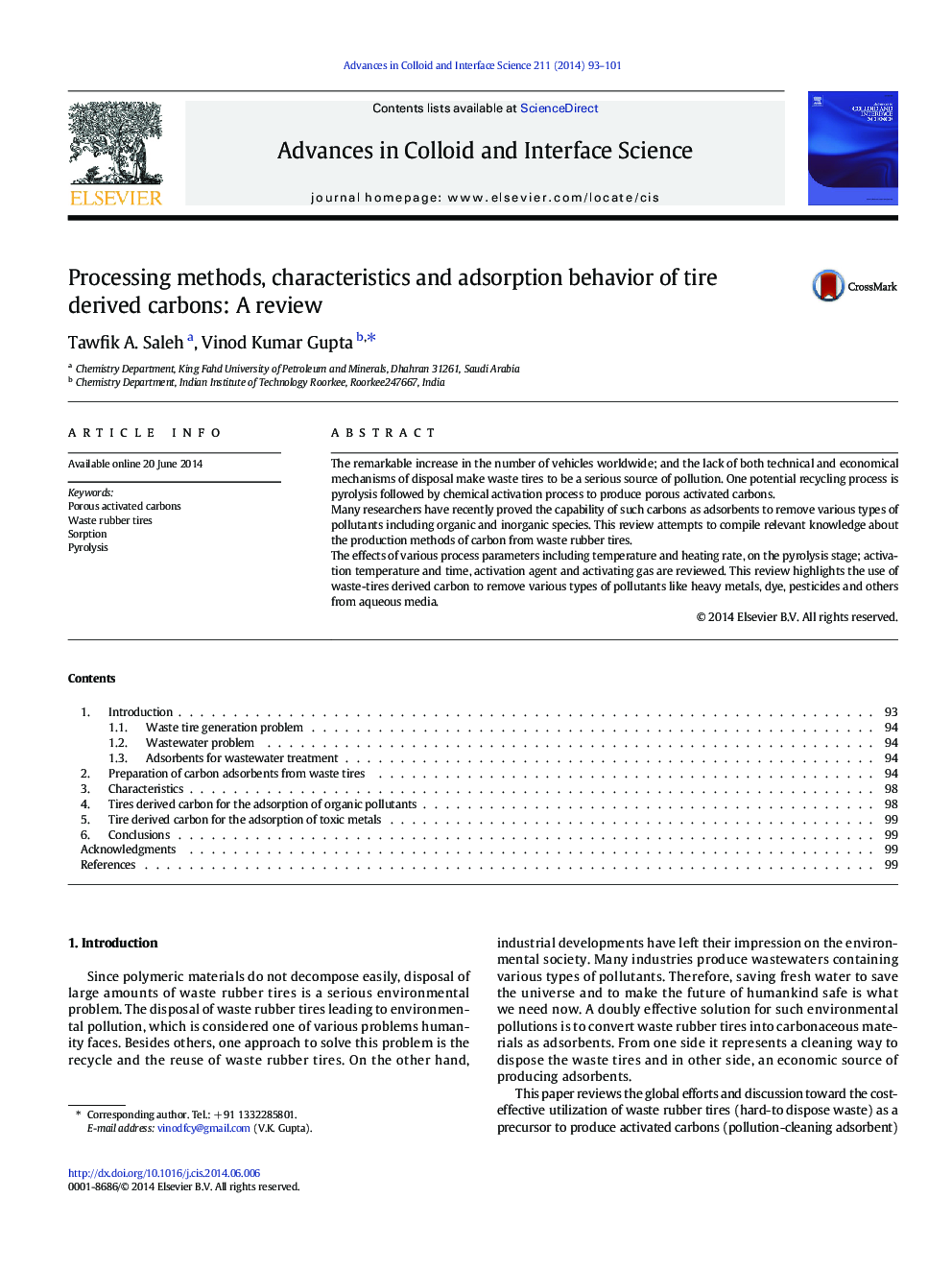| Article ID | Journal | Published Year | Pages | File Type |
|---|---|---|---|---|
| 590720 | Advances in Colloid and Interface Science | 2014 | 9 Pages |
•A doubly effective solution for waste rubber tires is reviewed, where waste rubber tires are converted to porous carbon.•The tire-derived activated carbon was reviewed for its production methods.•The tire-derived activated carbon was reviewed for its characteristics and applications.
The remarkable increase in the number of vehicles worldwide; and the lack of both technical and economical mechanisms of disposal make waste tires to be a serious source of pollution. One potential recycling process is pyrolysis followed by chemical activation process to produce porous activated carbons.Many researchers have recently proved the capability of such carbons as adsorbents to remove various types of pollutants including organic and inorganic species. This review attempts to compile relevant knowledge about the production methods of carbon from waste rubber tires.The effects of various process parameters including temperature and heating rate, on the pyrolysis stage; activation temperature and time, activation agent and activating gas are reviewed. This review highlights the use of waste-tires derived carbon to remove various types of pollutants like heavy metals, dye, pesticides and others from aqueous media.
Graphical abstractFigure optionsDownload full-size imageDownload as PowerPoint slide
